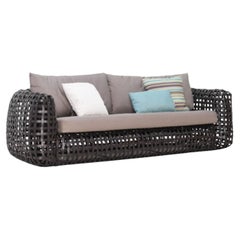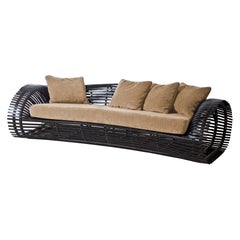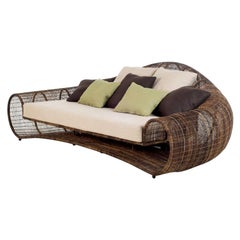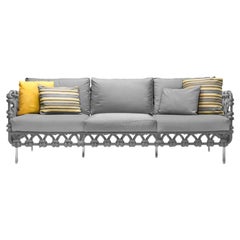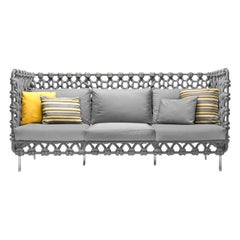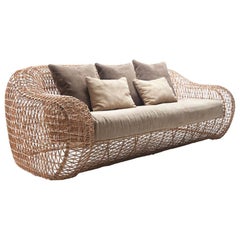Outdoor Sofas By Kenneth Cobonpue
2010s Philippine Modern Sofas
Aluminum
2010s Philippine Modern Sofas
Aluminum
2010s Philippine Modern Sofas
Steel
2010s Philippine Modern Sofas
Steel, Stainless Steel
2010s Philippine Modern Sofas
Steel, Stainless Steel
2010s Philippine Modern Loveseats
Steel
People Also Browsed
Late 20th Century Italian Mid-Century Modern Sofas
Leather
21st Century and Contemporary Portuguese Modern Sofas
Velvet, Walnut
21st Century and Contemporary Portuguese Modern Sofas
Velvet
2010s American Flush Mount
Brass
Vintage 1970s Italian Space Age Sofas
Chrome
Vintage 1970s American Mid-Century Modern Loveseats
Chrome
2010s Australian Scandinavian Modern Ottomans and Poufs
Sheepskin
21st Century and Contemporary Philippine Armchairs
Steel
21st Century and Contemporary American Bohemian Chandeliers and Pendants
Brass
21st Century and Contemporary Modern Planters and Jardinieres
Cement
Vintage 1970s European Mid-Century Modern Sofas
Leather
21st Century and Contemporary Balkan Modern Side Tables
Composition
Vintage 1970s Italian Mid-Century Modern Daybeds
Bamboo, Rattan
Vintage 1970s French Side Tables
Glass, Wood
21st Century and Contemporary Mid-Century Modern Armchairs
Metal
Vintage 1970s Italian Mid-Century Modern Sofas
Bamboo
Kenneth Cobonpue for sale on 1stDibs
Kenneth Cobonpue is a multi-award winning furniture designer and manufacturer from Cebu, Philippines. His passage to design began in 1987 while studying industrial design at Pratt Institute in New York.
While completing his studies, Cobonpue apprenticed for a leather and wood workshop near Florence, Italy. He went on to study furniture marketing and production at the Export-Akademie Baden-Württemberg in Reutlingen, Germany, under a private and state scholarship program, and subsequently worked in Bielefeld and Munich.
Cobonpue returned home to Cebu in 1996 to manage Interior Crafts of the Islands, Inc., a furniture design and manufacturing company founded by his mother, Betty Cobonpue, in 1972. Discovering that modern design could have a new face using natural fibers and materials, Cobonpue created pieces of functional art, offering an alternative to the Western definition of modern design. Today, the KENNETHCOBONPUE brand has become known globally for its unique designs and extensive roster of clientele, which includes Hollywood celebrities and royalty.
With his masterful way of integrating nature, traditional craft and innovative technologies in his work, designer and creative director Cobonpue has earned international awards and recognition for his creative, organic and expressive pieces. Working closely with some of the world’s leading designers — from household names to emerging talents — Cobonpue has been pushing the envelope for design in the Philippines and sharing his vision with a global audience.
Awards to Cobonpue’s credit include five Japan Good Design Awards, the grand prize at the Singapore International Design Competition, the DFA Design for Asia Award from the Hong Kong Design Centre, the American Society of Interior Design Top Pick selection and the French Coup de Coeur award. Several of Cobonpue’s designs were selected for several editions of the International Design Yearbook published in London and New York. Phaidon’s book, & Fork, underscores Cobonpue’s position as a leader of a new movement incorporating new technologies in crafts. In 2007, TIME magazine called him “rattan’s first virtuoso.” Cobonpue was named the Designer of the Year in the first edition of Maison&Objet Asia held in March 2014 in Singapore.
Cobonpue reveals new work each year in the design shows from Milan to New York, and he speaks regularly about Southeast Asian design all over the world. He has also appeared in European television and in countless international magazines and newspapers around the world. Various Cobonpue designs have also appeared in full-length feature films and television, such as Oceans 13 and CSI.
Find a collection of Kenneth Cobonpue furniture today on 1stDibs.
(Biography provided by Galerie Philia)
A Close Look at Modern Furniture
The late 19th and early 20th centuries saw sweeping social change and major scientific advances — both of which contributed to a new aesthetic: modernism. Rejecting the rigidity of Victorian artistic conventions, modernists sought a new means of expression. References to the natural world and ornate classical embellishments gave way to the sleek simplicity of the Machine Age. Architect Philip Johnson characterized the hallmarks of modernism as “machine-like simplicity, smoothness or surface [and] avoidance of ornament.”
Early practitioners of modernist design include the De Stijl (“The Style”) group, founded in the Netherlands in 1917, and the Bauhaus School, founded two years later in Germany.
Followers of both groups produced sleek, spare designs — many of which became icons of daily life in the 20th century. The modernists rejected both natural and historical references and relied primarily on industrial materials such as metal, glass, plywood, and, later, plastics. While Bauhaus principals Marcel Breuer and Ludwig Mies van der Rohe created furniture from mass-produced, chrome-plated steel, American visionaries like Charles and Ray Eames worked in materials as novel as molded plywood and fiberglass. Today, Breuer’s Wassily chair, Mies van der Rohe’s Barcelona chair — crafted with his romantic partner, designer Lilly Reich — and the Eames lounge chair are emblems of progressive design and vintage originals are prized cornerstones of collections.
It’s difficult to overstate the influence that modernism continues to wield over designers and architects — and equally difficult to overstate how revolutionary it was when it first appeared a century ago. But because modernist furniture designs are so simple, they can blend in seamlessly with just about any type of décor. Don’t overlook them.
Finding the Right Sofas for You
Black leather, silk velvet cushions, breathable bouclé fabric — when shopping for antique or vintage sofas, today’s couch connoisseurs have much to choose from in terms of style and shape. But it wasn’t always thus.
The sofa is typically defined as a long upholstered seat that features a back and arms and is intended for two or more people. While the term “couch” comes from the Old French couche, meaning to lie down, and sofa has Eastern origins, both are forms of divan, a Turkish word that means an elongated cushioned seat. Bench-like seating in Ancient Greece, which was padded with soft blankets, was called klinai. No matter how you spell it, sofa just means comfort, at least it does today.
In the early days of sofa design, upholstery consisted of horsehair or dried moss. Sofas that originated in countries such as France during the 17th century were more integral to decor than they were to comfort. Like most Baroque furnishings from the region, they frequently comprised heavy, gilded mahogany frames and were upholstered in floral Beauvais tapestry. Today, options abound when it comes to style and material, with authentic leather offerings and classy steel settees. Plush, velvet chesterfields represent the platonic ideal of coziness.
Vladimir Kagan’s iconic sofa designs, such as the Crescent and the Serpentine — which, like the sectional sofas of the 1960s created by furniture makers such as Harvey Probber, are quite popular among mid-century modern furniture enthusiasts — showcase the spectrum of style available to modern consumers. Those looking to make a statement can turn to Studio 65’s lip-shaped Bocca sofa, which was inspired by the work of Salvador Dalí. Elsewhere, the furniture of the 1970s evokes an era when experimentation ruled, or at least provided a reason to break the rules. Just about every area of society felt a sudden urge to be wayward, to push boundaries — and buttons. Vintage leather sofas of that decade are characterized by a rare blending of the showy and organic.
With so many options, it’s important to explore and find the perfect furniture for your space. Paying attention to the lines of the cushions as well as the flow from the backrest into the arms is crucial to identifying a cohesive new piece for your home or office.
Fortunately, with styles from every era — and even round sofas — there’s a luxurious piece for every space. Deck out your living room with an Art Deco lounge or go retro with a nostalgic '80s design. No matter your sitting vision, the right piece is waiting for you in the expansive collection of unique sofas on 1stDibs.
